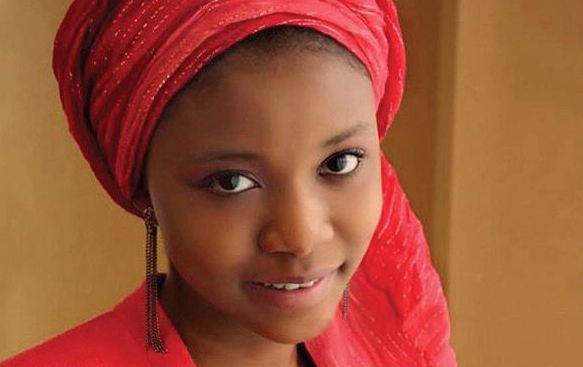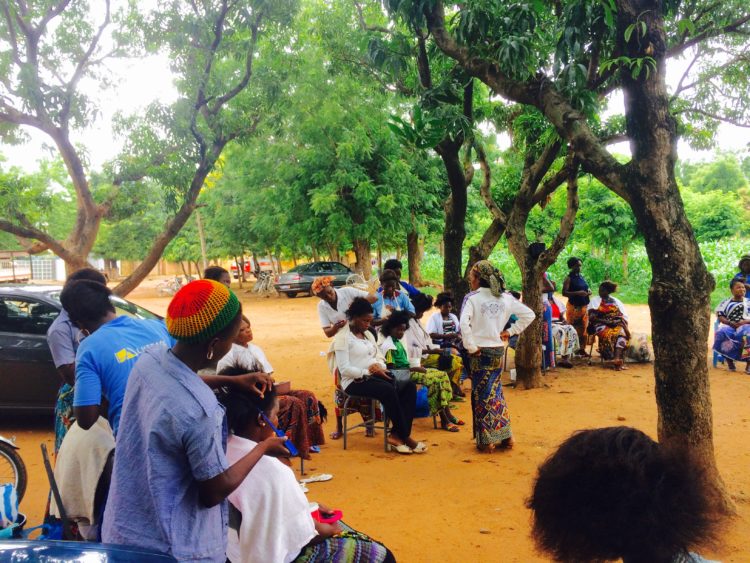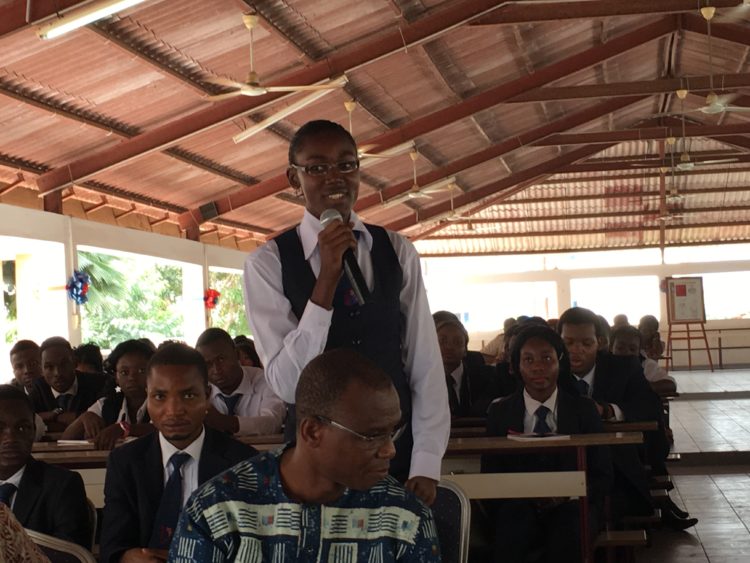Growing up, I did not consider malaria a serious threat. To me, and my friends and family, malaria was simply an inconvenient illness that people got, like the flu. I have had malaria several times, the last time merely a few weeks ago. But while malaria is treatable and preventable, it kills around 400,000 people every year and – tragically – is the fifth leading cause of death for 10- to 14-year-old girls.

No matter your age, gender or ethnicity, diseases like malaria do not discriminate. The humble mosquito infects millions of men and women alike each year, but while we’re all at equal risk of getting a mosquito bite, the health, societal and economic burdens of malaria are much more likely to fall on women and adolescent girls.
Consider the health burden. After surviving malaria past the age of 5, when children are most at risk, the first pregnancy is the most dangerous time for contracting malaria, due to weakened immunity. In 2019, one in four young women in Sub-Saharan Africa gave birth before they turned 18. For pregnant women, malaria infection can lead to severe disease and death, and when placental infection occurs, children are far more likely to be born with anemia, putting them at greater developmental risk.
Malaria interventions and care including a full course of intermittent preventive treatment during pregnancy (IPTp) and for infancy (IPTi) and access to insecticide-treated nets are essential to preventing these statistics. However, factors such as stigma of being found out to be pregnant or lack of agency to seek antenatal care stand in the way for these young women to reap their life-saving benefits.
There is an indirect societal and economic impact too. Adolescent girls contribute to the informal ‘care economy’, often being tasked as caretakers of family members with malaria. Sadly, caring for children and family members who suffer from malaria multiple times each year can keep a young woman from pursuing her education or a career. I was fortunate enough to pursue my education and launch my career, but for many young girls, malaria rips these opportunities from them. School absenteeism is a major step backwards for gender equality, and devastatingly, puts young girls at greater risk of early marriage, child-bearing, and sexual exploitation – having a much greater impact on their futures.

While malaria may be gender blind, our approach to tackling it shouldn’t be. By tailoring malaria information, messages and programs to the needs of adolescent girls, we can equip these young women with the information they need to protect themselves and, when they become mothers, their future families and communities. Lack of data to understand the barriers to treatment for these vulnerable girls also is vital. Disaggregating data by gender and age can offer critical information for health ministries and partners to identify and address gaps in care. The need for data also extends beyond one group; it would be vital for better understanding health care access at any age.
In a world where women bear malaria’s brunt, a no brainer solution is to empower adolescent girls and women in decision-making roles to improve the response to this preventable and treatable disease. We must seek out and listen to their voices and experiences and engage them in developing and delivering solutions to address them. This was highlighted in a recent report from the RBM Partnership to End Malaria and Malaria No More, which makes the case for intentional investment in gendered research, new strategies and policies as well as cultivating and empowering women leaders.
When I was a student, I learned the potential that every one of us has to make a real impact. At the time, I was raising money for a community malaria program that was unable to receive grants. Progress was slow, and I started by raising only small amounts, but in the end, we were successful in achieving our goal. Knowing I could make a difference and benefit my community has inspired me, and since then, I have dedicated my youth to being an advocate for positive social change.
That’s why I wasn’t surprised to read that 9 in 10 African youth want to take personal action in the fight against malaria – whether it’s volunteering their time to distribute mosquito nets, or simply sharing information about malaria prevention on social media to educate their peers. I personally am proud to contribute my voice, by speaking up for the change we need to achieve a malaria free future.
Adolescent girls are central to our fight against malaria. With quality information and decision-making agency, and when valued as caregivers, we can drive improved maternal and child health, reduce malaria’s impact, and lift our families out of poverty. By investing more in adolescent girls and women at the heart of the malaria fight, we can achieve a double dividend: accelerating malaria elimination and advancing gender equality. While this will require new investment and strategies, the harder the battle, the greater the victory!
Munira Abdul Muhammad is Project Lead at End Malaria Nigeria.

